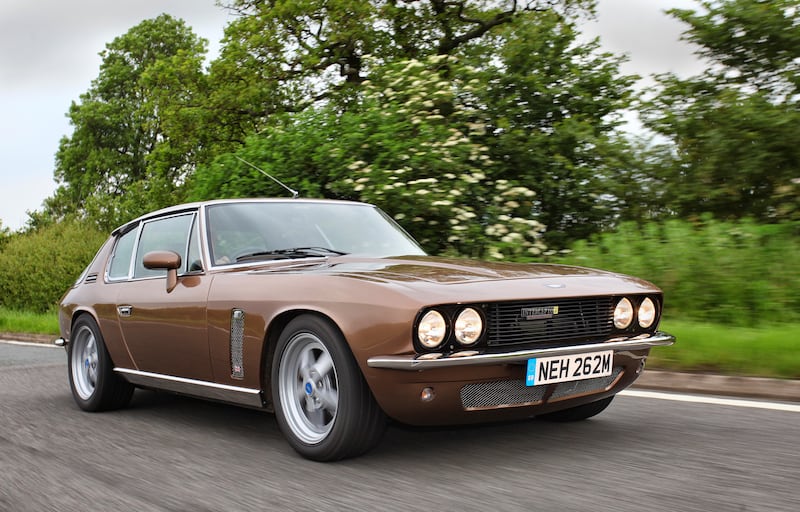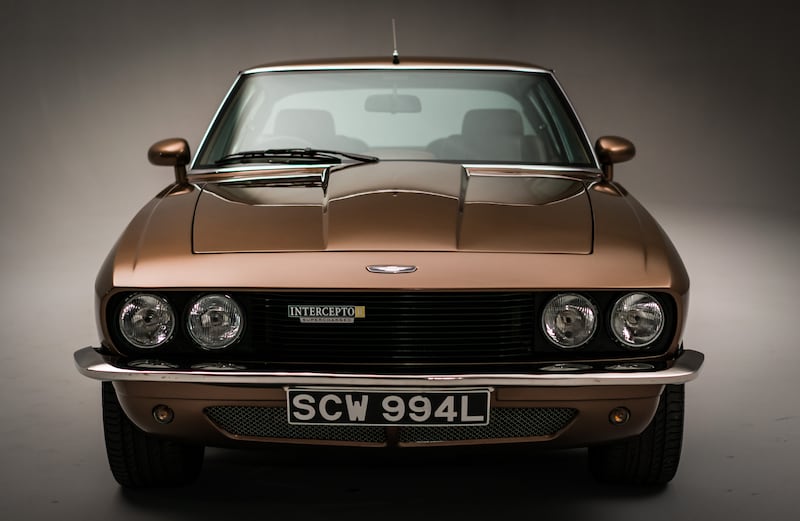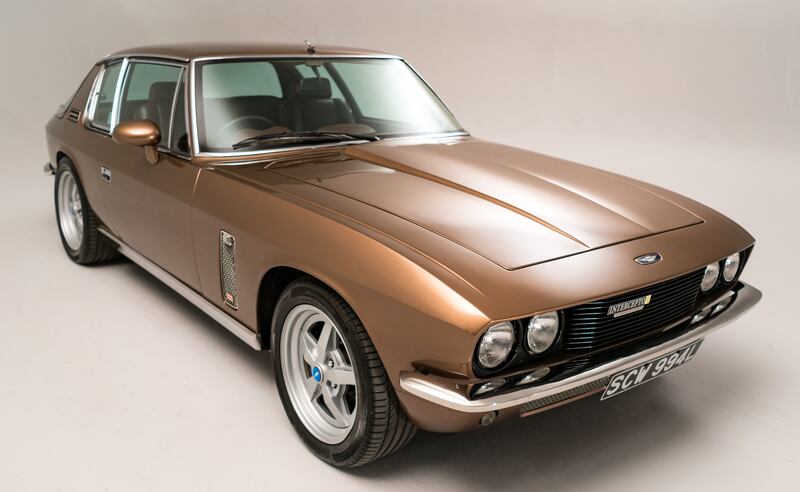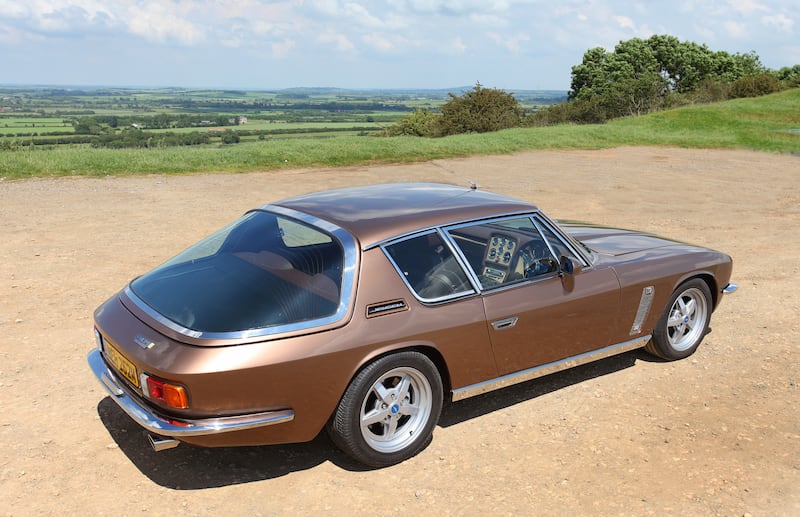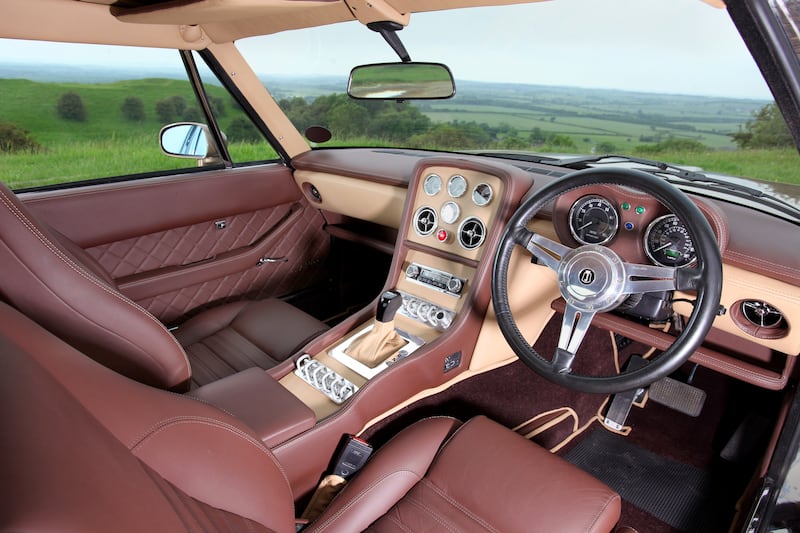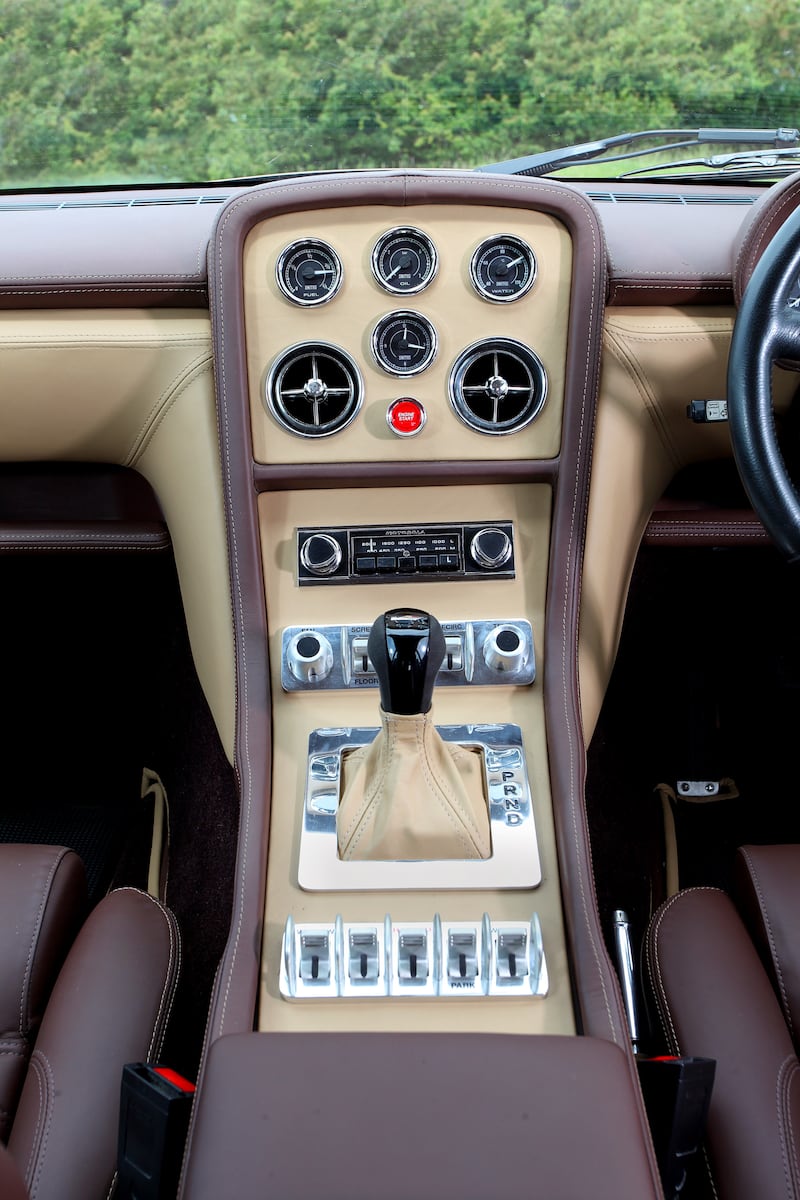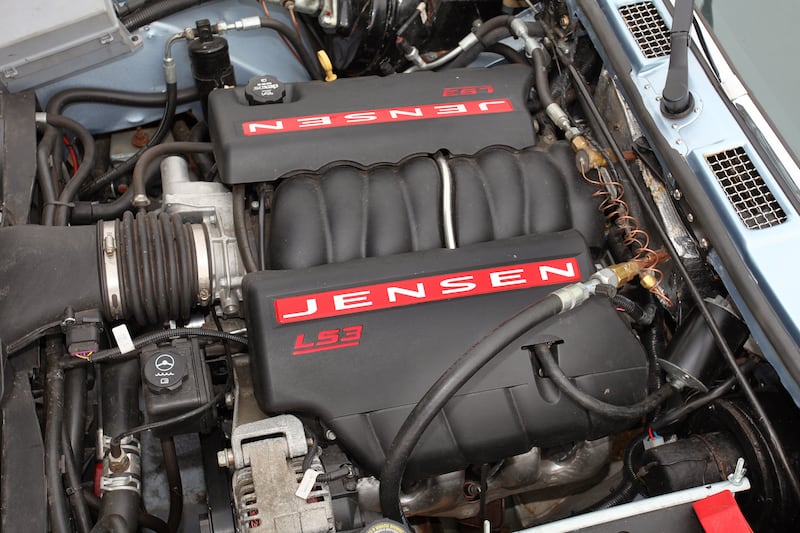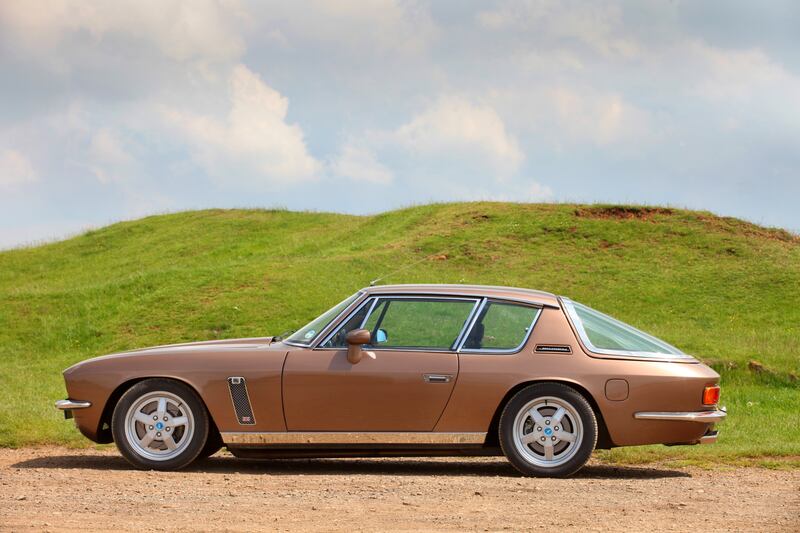As the road clears, I finally get to punch it. The prominent burble goes guttural, then crescendos to a revelling roar, and the rear of the car squats as the nose charges forth.
It feels as if my body is being left behind, and I cling to the vintage Moto-Lita steering wheel as the space within the cabin seems to warp and stretch. Are my arms actually getting longer? This question is only fleetingly pondered as my eyes refocus to engage with the fast-changing scenery.
My mind, meanwhile, is in a quandary. This is not a supercar. It's not even new ... well, not entirely. I'm at the wheel of the 1970s Jensen Interceptor, possibly one of the coolest car names to ever exist. Except this is an Interceptor R, which never did exist.
You've just read this paragraph twice trying to figure out what’s going on. I'll explain, but first let’s wind back the exquisite Smiths Instruments analogue dash clock to the Swinging Sixties.
Reviving the Jensen brand
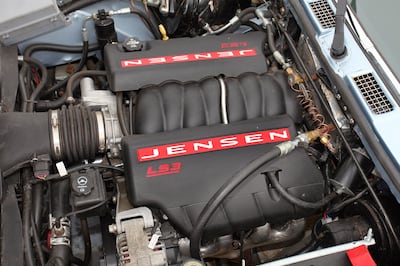
When British manufacturer Jensen Motors revived the Interceptor name in 1966, it turned to Carrozzeria Touring of Italy to style the imposing and handsome steel bodies, then fitted big block Chrysler V8 engines boasting up to 330 brake horsepower.
Production lasted until 1976 when the company fell into receivership. The FF version of the Interceptor is particularly notable for being the first production road car to offer all-wheel drive (13 years before the Audi Ur-Quattro) and ABS anti-lock brakes (Mercedes didn't introduce them until 1978).
Those FFs are rare: only about 300 were made out of nearly 6,500 Interceptors, of which, too, only 1,000 or so survive globally. Jensen International Automotive (founded in 2010 and not related to the original company) sources and restores old Interceptors, updating them with modern mechanicals and electronics to create the ultimate restomod classic British car.
You can take your own Interceptor to the team, and mix and match the level of restoration or upgrade desired, but in terms of turnkey-finished Interceptors, only about six are produced a year. It takes 18 months and 3,000 man-hours to build one.
Standard specs and customisation options
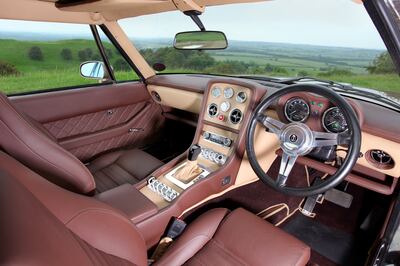
Visiting the company in Oxfordshire, I count three cars in various states of completion. Each has had its leaf-spring rear suspension and live axles removed and replaced with a Jaguar-sourced independent set-up requiring considerable surgery to install. Bigger ABS brakes (AP Racing six-pot callipers upfront) and traction control are added. This handles, rides and stops far better than when the cars were new.
I inspect two further bare shells sat sideways on rotisseries, the massive tubular chassis beams underneath, testament to the Interceptor's inherent strength and why it can handle nearly double the power it was originally endowed with. The heavy, thirsty and prone-to-overheating original Chrysler V8s are ditched in favour of brand-new GM 6.2-litre V8 engines, eight-speed transmissions and cooling systems.
The sky’s the limit when it comes to specification and personalisation, but engine-wise you choose between the LS3 or LT4 motors. And then you have a Jensen Interceptor with either 556bhp or a colossal 650bhp in supercharged guise.
This finally brings us to that “R” that is Jensen International's own evolution of the car, featuring extensive work not just under the skin, but in the cabin, too. There’s a completely new dashboard, with machined alloy toggle switches, electric windows and mirrors, modern infotainment including Bluetooth connectivity, and a big red starter button.
Make a powerful statement
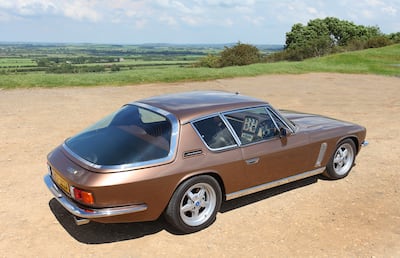
Hit that for jaw-dropping acceleration even on this older demo car fitted with a 560bhp LSA motor and six-speed auto. With a five-metre footprint and weighing 1,600 kilograms, it feels more planted than bulky. This is no lumbering braggart, this is an erudite charmer. The power itself is never overwhelming but arrives like a well-thrown fist in a soft leather driving glove when you call for it.
The suspension upgrade means that while there are telltale rattles and wind noise redolent of classics, there is no flex, no wander. It has the high-speed stability of a modern car. The brake pedal travels a little before hooking up, but then is well moderated and drops anchor-hard when you need it.
While the car floats along comfortably on the straight, hurling it through bends finds little roll or pitch, and it retains surprising poise and assured composure when changing direction. Go harder and it will lean, but this isn't a sports car. What it most definitely will do is crush distances in great comfort for two (the rear seats are best left for children, though the luggage space is ample).
There’s no compromise when driving this “classic” in the urban environment, either, thanks to the modernisation (you can even add parking sensors and rear cameras) and you outclass all the latest exotica just by turning up in this thing.
Three of these already live in the Middle East (the one in the UAE is apparently used as a daily driver), and while it’s hard to put a price tag on them, estimate spending at least Dh1.5 million. For that, you'll get Sixties swank and devil-may-care charisma, but without compromising on the mod cons. Oh, and hold on tight, this is one quick ride.
The specs
Engine: 6.2-litre supercharged V8
Power: 650bhp
Torque: 880Nm
Transmission: eight-speed automatic
Price: Dh1.5 million
On sale: now
